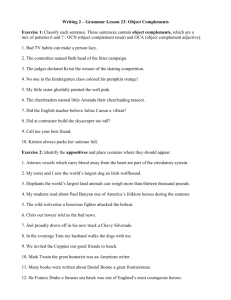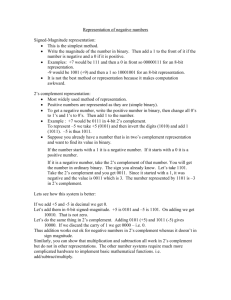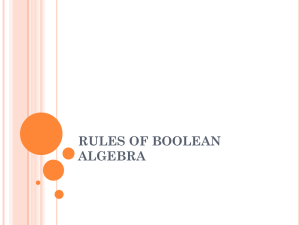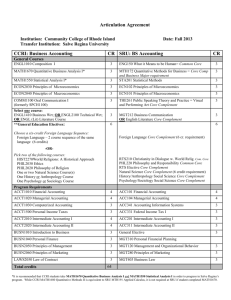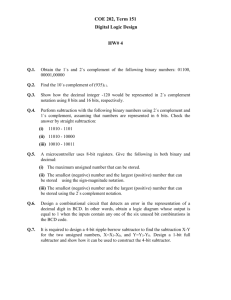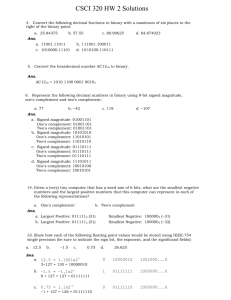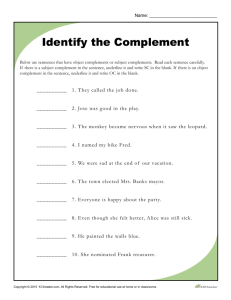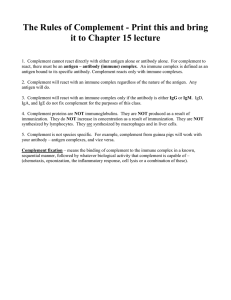Heavy-Head-Light - Association for Linguistic Typology
advertisement
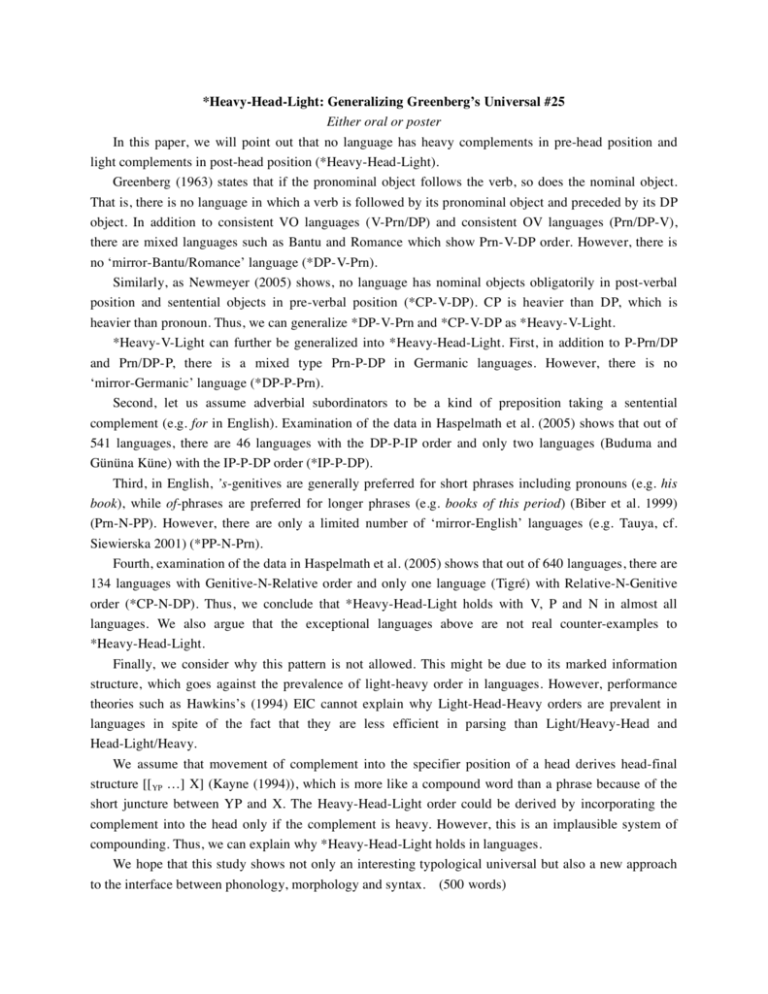
*Heavy-Head-Light: Generalizing Greenberg’s Universal #25 Either oral or poster In this paper, we will point out that no language has heavy complements in pre-head position and light complements in post-head position (*Heavy-Head-Light). Greenberg (1963) states that if the pronominal object follows the verb, so does the nominal object. That is, there is no language in which a verb is followed by its pronominal object and preceded by its DP object. In addition to consistent VO languages (V-Prn/DP) and consistent OV languages (Prn/DP-V), there are mixed languages such as Bantu and Romance which show Prn-V-DP order. However, there is no ‘mirror-Bantu/Romance’ language (*DP-V-Prn). Similarly, as Newmeyer (2005) shows, no language has nominal objects obligatorily in post-verbal position and sentential objects in pre-verbal position (*CP-V-DP). CP is heavier than DP, which is heavier than pronoun. Thus, we can generalize *DP-V-Prn and *CP-V-DP as *Heavy-V-Light. *Heavy-V-Light can further be generalized into *Heavy-Head-Light. First, in addition to P-Prn/DP and Prn/DP-P, there is a mixed type Prn-P-DP in Germanic languages. However, there is no ‘mirror-Germanic’ language (*DP-P-Prn). Second, let us assume adverbial subordinators to be a kind of preposition taking a sentential complement (e.g. for in English). Examination of the data in Haspelmath et al. (2005) shows that out of 541 languages, there are 46 languages with the DP-P-IP order and only two languages (Buduma and Gününa Küne) with the IP-P-DP order (*IP-P-DP). Third, in English, ’s-genitives are generally preferred for short phrases including pronouns (e.g. his book), while of-phrases are preferred for longer phrases (e.g. books of this period) (Biber et al. 1999) (Prn-N-PP). However, there are only a limited number of ‘mirror-English’ languages (e.g. Tauya, cf. Siewierska 2001) (*PP-N-Prn). Fourth, examination of the data in Haspelmath et al. (2005) shows that out of 640 languages, there are 134 languages with Genitive-N-Relative order and only one language (Tigré) with Relative-N-Genitive order (*CP-N-DP). Thus, we conclude that *Heavy-Head-Light holds with V, P and N in almost all languages. We also argue that the exceptional languages above are not real counter-examples to *Heavy-Head-Light. Finally, we consider why this pattern is not allowed. This might be due to its marked information structure, which goes against the prevalence of light-heavy order in languages. However, performance theories such as Hawkins’s (1994) EIC cannot explain why Light-Head-Heavy orders are prevalent in languages in spite of the fact that they are less efficient in parsing than Light/Heavy-Head and Head-Light/Heavy. We assume that movement of complement into the specifier position of a head derives head-final structure [[YP …] X] (Kayne (1994)), which is more like a compound word than a phrase because of the short juncture between YP and X. The Heavy-Head-Light order could be derived by incorporating the complement into the head only if the complement is heavy. However, this is an implausible system of compounding. Thus, we can explain why *Heavy-Head-Light holds in languages. We hope that this study shows not only an interesting typological universal but also a new approach to the interface between phonology, morphology and syntax. (500 words)
